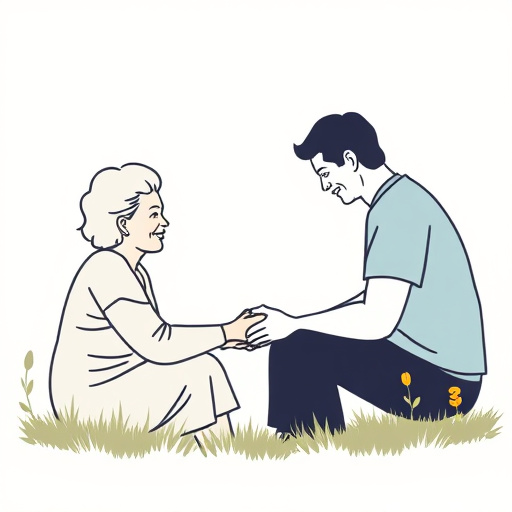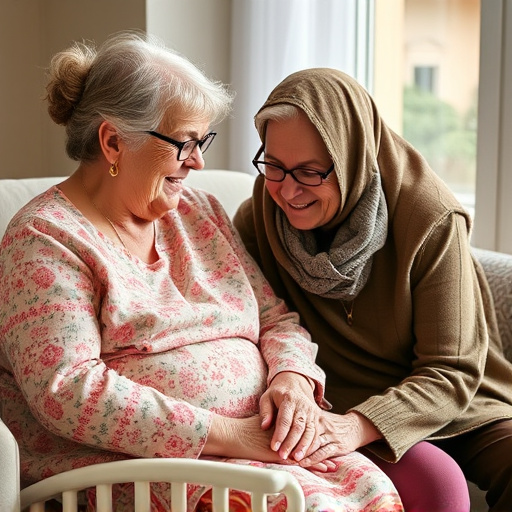Planning a green funeral minimizes environmental impact, aligning with growing eco-consciousness. By choosing natural burial, fuel-efficient cremation, and biodegradable embalming, individuals can reduce carbon footprint. Sustainable practices include using biodegradable materials, locally sourced floral arrangements, outdoor ceremonies in natural settings, and minimizing use of non-recycled paper products – all while honoring loved ones and contributing to a greener funeral industry.
Planning a green funeral is a meaningful way to honour a loved one while minimising environmental impact. In this guide, we explore eco-friendly alternatives within funeral services, shedding light on the significant environmental consequences of traditional practices. From sustainable burial options to eco-conscious floral arrangements, discover simple steps to create a serene and nature-focused farewell. Learn how to navigate this process, ensuring a respectful and environmentally conscious celebration of life.
- Understanding Green Funeral Options
- The Environmental Impact of Traditional Funerals
- Steps to Plan an Eco-Friendly Funeral Service
Understanding Green Funeral Options

Planning a green funeral is an increasingly popular choice for those looking to minimize their environmental impact, even in death. The term ‘green’ here refers to services and practices designed to be eco-friendly, sustainable, and respectful of nature. This approach extends beyond the traditional funeral service to encompass everything from burial options to the materials used in ceremonies. One of the first steps is understanding the various green funeral options available, which can include natural burial, green cremation, and eco-friendly embalming methods.
Natural burial grounds, for instance, offer a simple return to earth without the use of chemical preservatives or vaults. Green cremations use fuel-efficient equipment and often incorporate the remains into biodegradable urns or scattering ceremonies. Eco-conscious embalming involves using natural preservation methods and biodegradable materials, ensuring the deceased is treated with respect while minimizing environmental harm. Exploring these options allows individuals to make informed decisions that align with their values, contributing to a more sustainable funeral industry within the broader context of funeral services.
The Environmental Impact of Traditional Funerals

Traditional funerals often have a significant environmental impact due to various practices that contribute to resource consumption and waste generation. One of the most visible aspects is the use of caskets, which are typically made from metal or wood and require substantial amounts of energy for production and transportation. Additionally, burial grounds themselves can become ecological challenges over time, as they demand vast spaces and often incorporate chemical processes for preservation, leading to soil and water contamination.
Funeral services also rely heavily on paper products, such as embalming materials and funeral programs, which, when not recycled, contribute to deforestation and waste accumulation in landfills. Furthermore, the floral arrangements commonly seen at funerals generate a considerable carbon footprint due to long-distance transportation of flowers, often from international locations. These practices highlight the need for more sustainable alternatives, prompting individuals and funeral homes to explore eco-friendly options as part of their planning for end-of-life ceremonies.
Steps to Plan an Eco-Friendly Funeral Service

Planning a green funeral is an eco-conscious way to bid farewell, minimising your environmental impact while celebrating the life of your loved one. Here are some steps to create an eco-friendly funeral service:
1. Choose natural, biodegradable materials for the casket or shroud. Avoid traditional options made from metal or plastic, opting instead for sustainable alternatives like bamboo, wicker, or recycled fabrics. This ensures that the final resting place is in harmony with nature. Additionally, select floral arrangements with locally sourced, seasonal flowers to reduce the carbon footprint associated with importing.
2. Opt for outdoor ceremonies whenever possible. Green funerals often take place in natural settings, such as forests, gardens, or cemeteries with dedicated green spaces. These locations provide a serene and environmentally friendly backdrop for the service. You can also consider holding the ceremony at home, allowing for a more intimate gathering and further reducing environmental impact.
Planning a green funeral is not only a compassionate choice but also a way to honour life while minimising environmental impact. By understanding the various eco-friendly options available, you can take significant steps towards a more sustainable funeral service. From choosing natural burials or cremations to selecting biodegradable coffins and flowers, every decision contributes to preserving our planet. Remember, even small changes can make a big difference; embracing green funeral practices ensures a meaningful send-off while leaving a positive ecological footprint.



